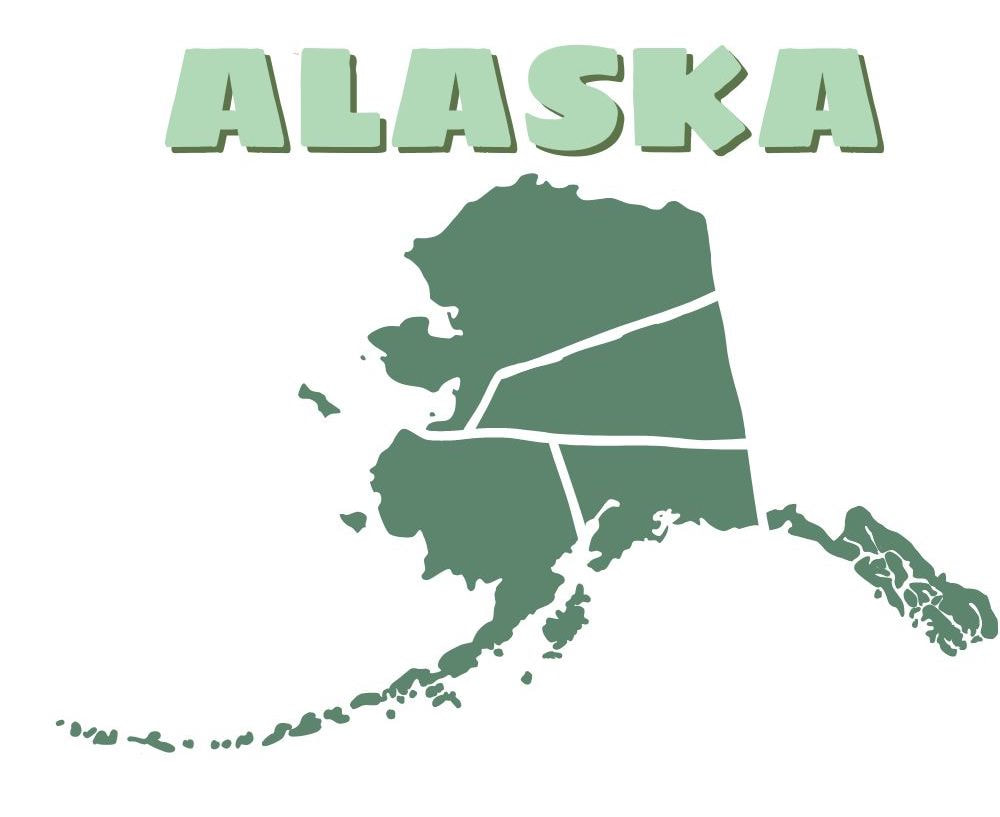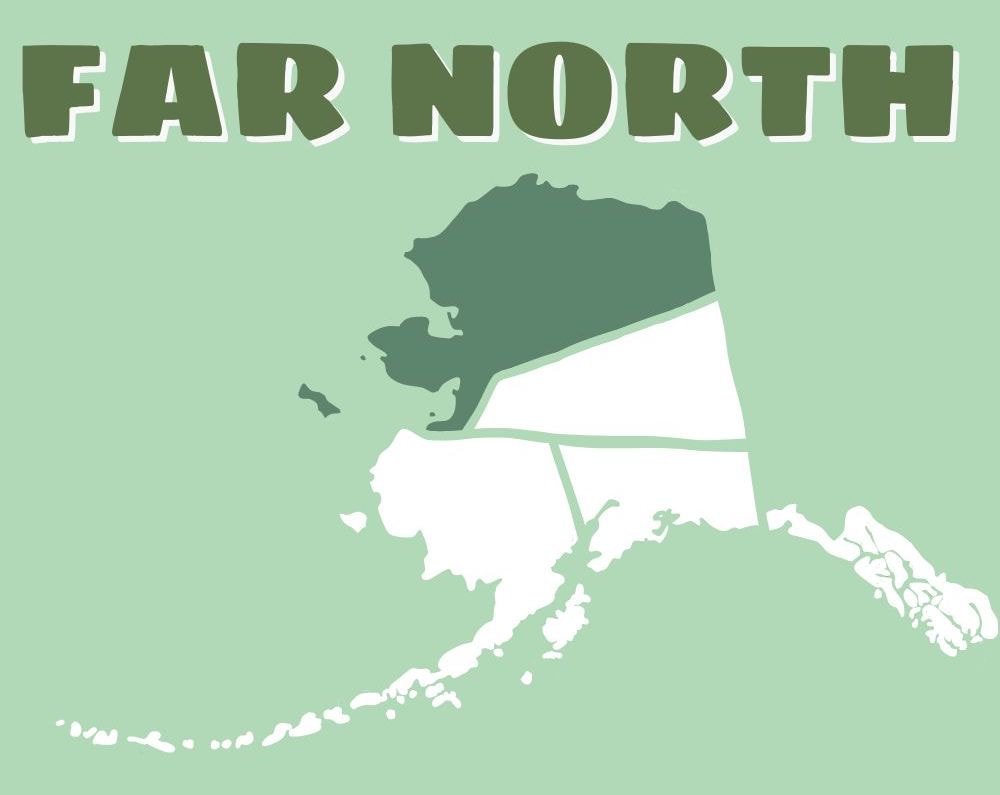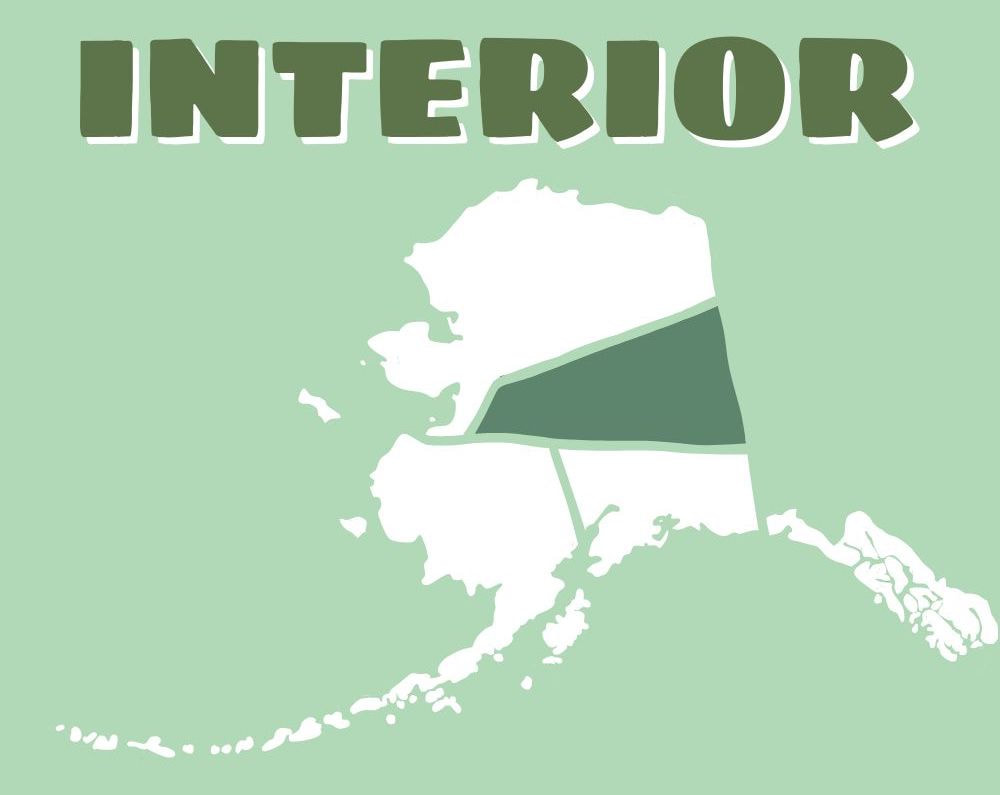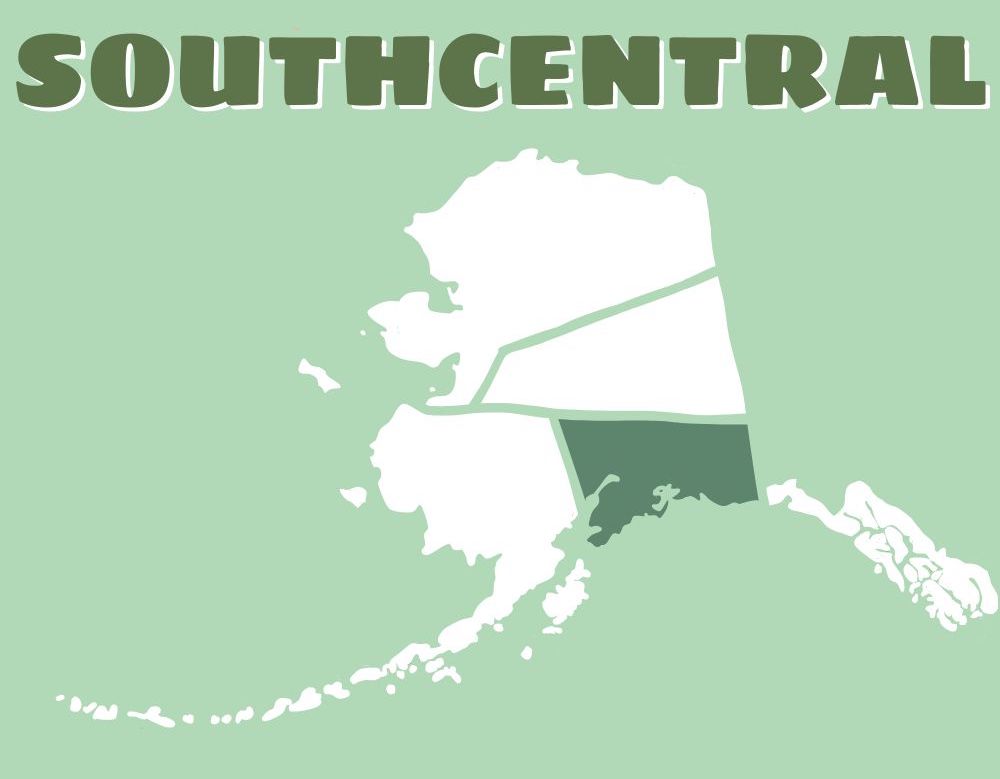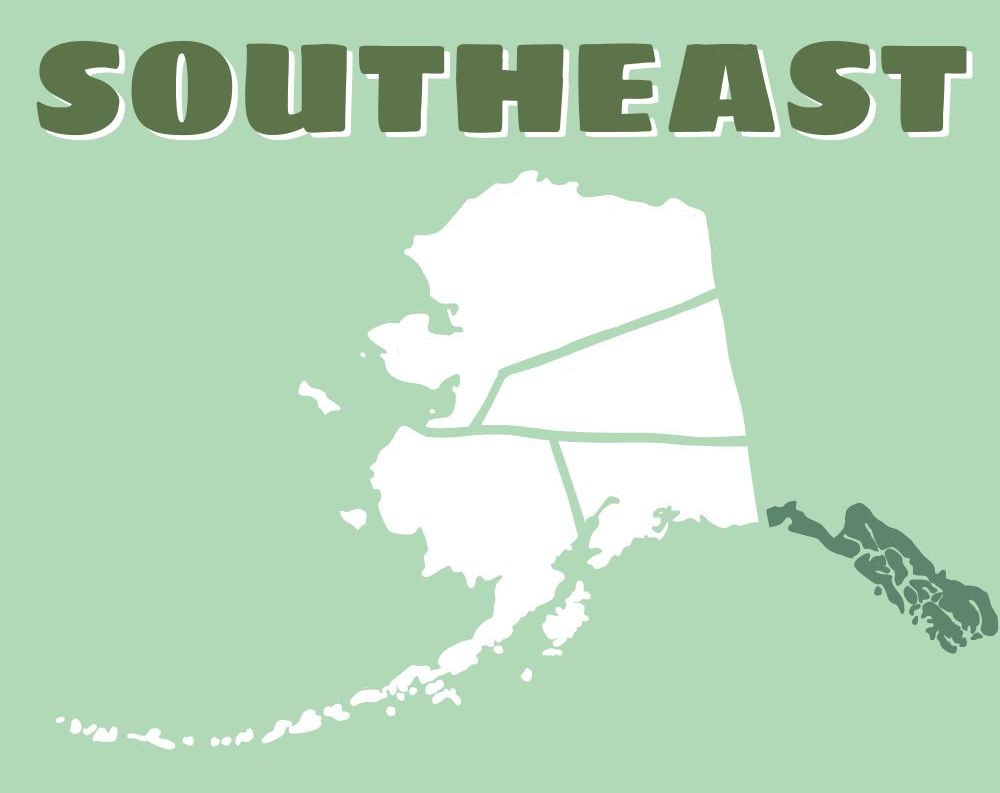The State of Alaska
|
In 1867 the United States purchased this land from Russia for a whopping $7.2 million, in today's world that would be about $125 million - averaging a cool 2 cents per acre. Just over 20 years later, thousands of gold miners and settlers rushed to the area for the event known around the world - the Gold Rush. During this time, the indigenous peoples and cultures of Alaska were very negatively affected - they were introduced to countless diseases they had no immunity for, the natural resources that they relied on for life were more quickly depleted, and many ways of life were changed forever.
|
From 1940 to today the native population of those in Alaska has declined from 45% to only 15%.
Eventually, in 1959, Alaska officially became the 49th State.
Eventually, in 1959, Alaska officially became the 49th State.
Far North Alaska
|
Indigenous Cultures : Iñupiat (in-NOO-pee-at) & Yup'ik (YOO-PIK) cultures revolve around their environment in the Far North. They practice traditional hunting and gathering of marine and land animals, birds, fish and berries.
Largest Cities : Nome, Utqiagvik, and Prudhoe Bay. Top Attractions : Gates of the Arctic National Park, Kobuk Valley National Park, Arctic Ocean, The North Slope, Northern Lights, Polar Bears. |
Interior Alaska
|
Indigenous Cultures : The Athabascan (ath-uh-bas-kuhn) peoples are found in Interior and Southwest Alaska, and traditionally followed the local fish and wildlife, settling around large rivers in these areas.
Largest Cities : Fairbanks, Tok, and Fort Yukon. Top Attractions : Chena Hot Springs, Pioneer Park, Northern Lights, Alaska Pipeline Viewing. |
Southwest Alaska
|
Indigenous Cultures : There are a number of Indigenous Cultures found in Southwest Alaska. Yup’ik (YOO-PIK) & Cup’ik (Choo-pik) peoples (similar to those in the Far North) rely on the environment around them. They practice traditional hunting and gathering, as well as more creative outlets like making masks, dance fans and grass baskets. The Unangax̂ (Oo-nun-gahx) and Sugpiaq (Soog-pyack) peoples rely heavily on their close relations to the sea, from their foods to their clothes, and were heavily influenced by the Russian cultures along the Aleutian Islands.
Largest Cities : Bethel, Dillingham, Dutch Harbor & the Aleutian Islands and Kodiak. Top Attractions : Katmai National Park, Brooks Falls Bears, Lake Clark National Park, Kodiak Island, Aleutian Islands & Dutch Harbor. |
Southcentral Alaska
|
Indigenous Cultures : The Athabascan peoples are found in Interior and Southwest Alaska, and traditionally followed the local fish and wildlife, settling around large rivers in these areas.
Largest Cities : Anchorage, Palmer, Wasilla, the Kenai Peninsula including Seward, and Valdez. Top Attractions : Kenai Fjords National Park, Denali National Park, Hotel Alyeska, Hatcher Pass, Prince William Sound, Exit Glacier, Matanuska Glacier, Marine Wildlife, Glaciers, Waterfalls. |
Southeast Alaska
|
Indigenous Cultures : Eyak, Haida, Tsimshian, and Tlingit cultures are found throughout the Inside Passage of Alaska. Known for being creatively skilled, they shine in their crafts of ceremonial robes, totem poles, and canoes.
Largest Cities : Juneau, Sitka, Ketchikan and Skagway. Top Attractions : Glacier Bay National Park, Marine Wildlife, Glaciers, Tongass National Forest, Alaska Cruises. |
